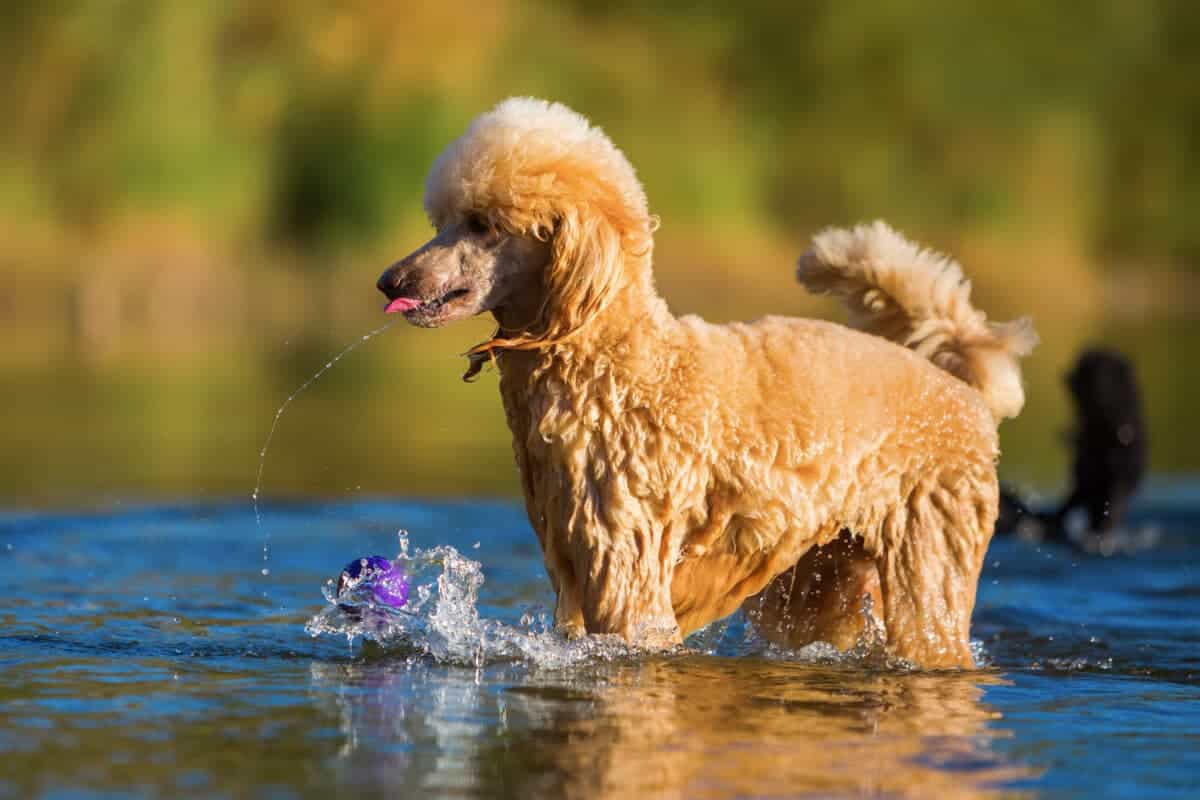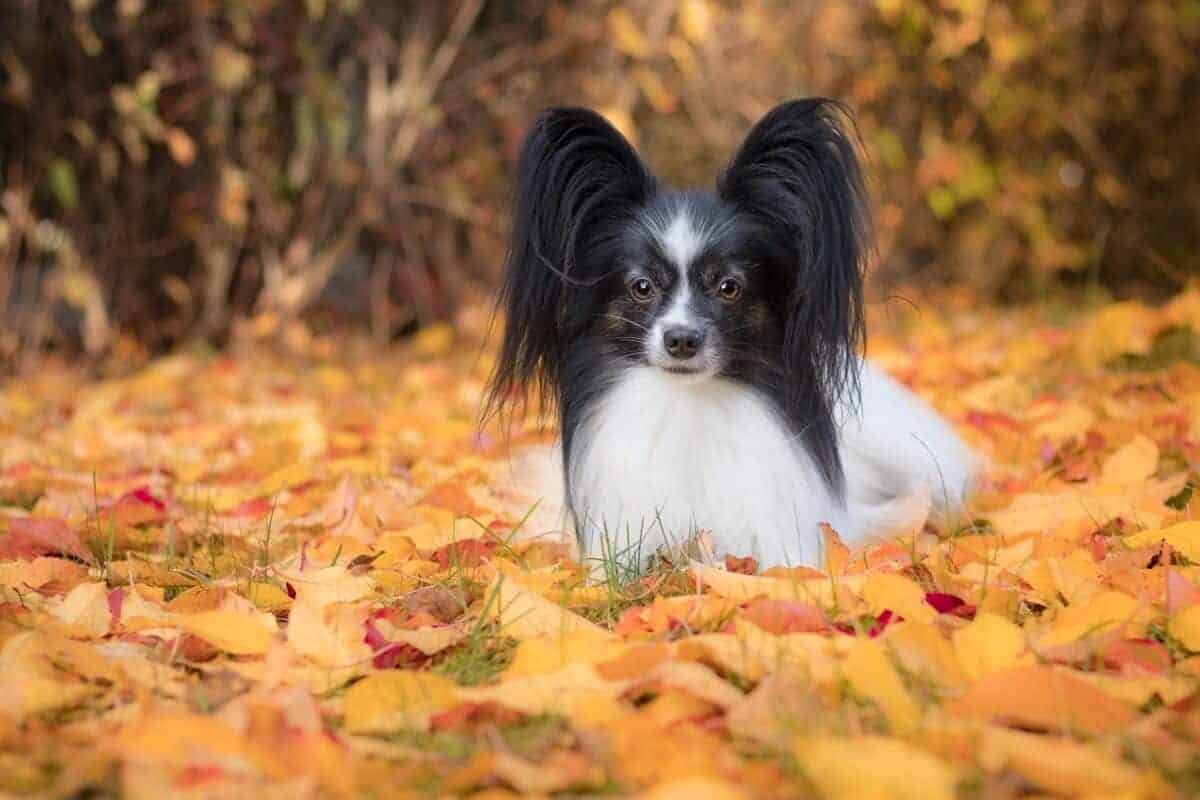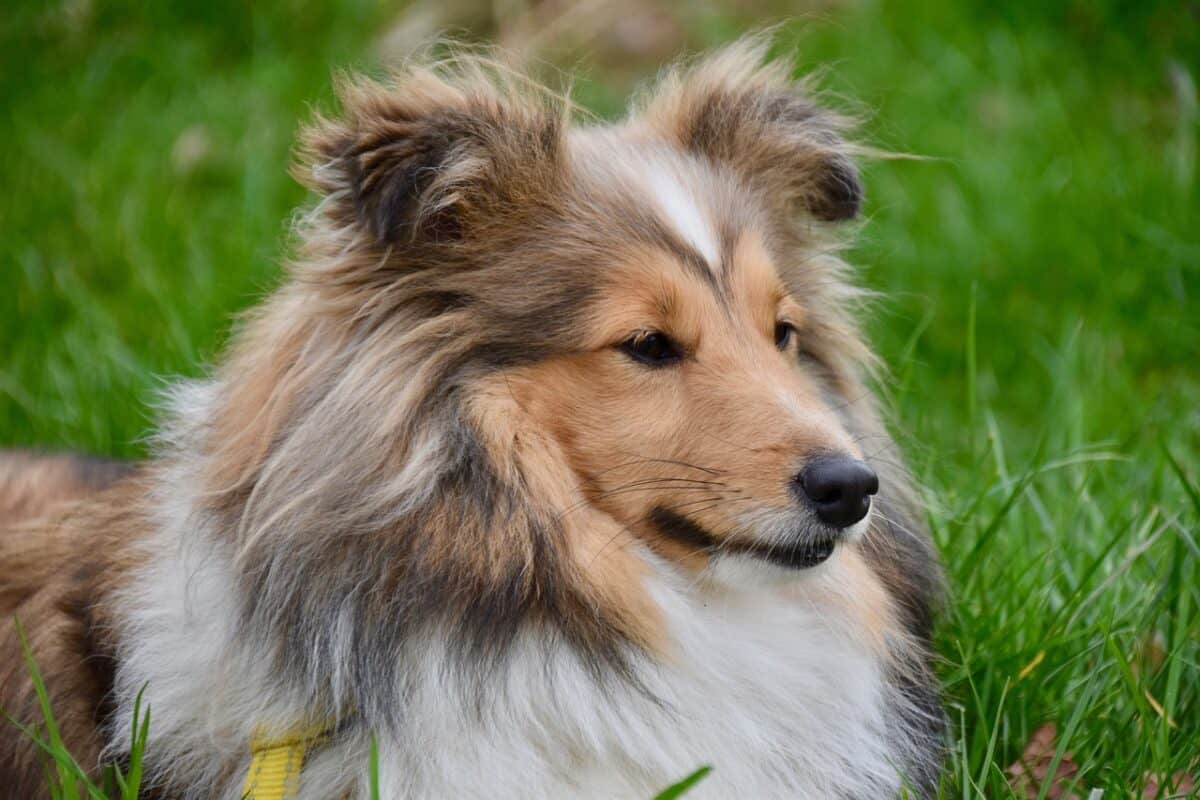Dogs have been our companions for thousands of years, evolving alongside humans in a unique partnership. One fascinating aspect of this relationship is how different breeds respond to training and trick learning. While all dogs can learn basic commands, some breeds seem to have a natural aptitude for mastering complex tricks and behaviors, while others might give you a blank stare when you try to teach them anything beyond “sit.”
This difference in trainability isn’t simply about intelligence—though that plays a role—but also about breed history, temperament, and motivation. Working breeds that were developed to perform specific tasks often excel at learning new skills, while breeds bred for independence or specific non-interactive purposes might find trick training less engaging. Understanding these differences can help dog owners set realistic expectations and find training approaches that work for their particular four-legged friend.
Border Collies The Undisputed Trick Champions

When it comes to learning tricks, Border Collies consistently top the charts as the most trainable dogs in the world. Originally bred for herding livestock in the challenging border country between Scotland and England, these dogs have been selected for their ability to learn complex commands, solve problems independently, and work tirelessly. This working heritage translates remarkably well to trick training, where Border Collies show an almost uncanny ability to understand and execute new behaviors.
Border Collies frequently dominate dog sports like agility, obedience, and flyball, often learning new tricks after just a few repetitions. The world’s most accomplished trick dogs are frequently Border Collies, including Chaser, who famously learned the names of more than 1,000 toys, and Rico, who could fetch specific items by name. Their combination of intelligence, focus, and eagerness to please makes them the gold standard for trick training, though their high energy and need for mental stimulation means they’re not the right fit for every household.
Poodles The Versatile Performers

Despite their reputation as fancy show dogs, Poodles were originally bred as water retrievers, and this working background has produced a remarkably intelligent and trainable breed. Available in three sizes (Standard, Miniature, and Toy), all Poodles share the same keen intelligence and people-pleasing nature that makes them exceptional at learning tricks. Their history as circus performers speaks to their aptitude for learning complex routines and their natural flair for showmanship.
Poodles combine high intelligence with an eagerness to please their owners, creating a perfect foundation for trick training. They excel at a wide variety of tricks, from the basics to complex routines involving multiple steps. Their hypoallergenic coat and range of sizes make them accessible to many different types of households, while their long lifespan means you’ll have many years to build an impressive trick repertoire together. For those looking for a highly trainable dog that’s also adaptable to different living situations, the Poodle is difficult to beat.
Australian Shepherds Tireless Trick Learners

Australian Shepherds (which, despite their name, were developed in the United States) bring the same intelligence and work ethic to trick training that made them exceptional herding dogs. These medium-sized, energetic dogs are renowned for their problem-solving abilities and seemingly boundless energy. They typically approach trick training with enthusiasm, quickly grasping new concepts and enjoying the mental challenge that complex tricks provide.
“Aussies,” as they’re affectionately known, thrive on having a job to do, which makes trick training an excellent outlet for their natural working instincts. They’re particularly adept at tricks involving movement and agility, such as weaving through legs, jumping through hoops, or performing complex routines with multiple elements. Their strong bond with their owners and desire to please makes positive reinforcement particularly effective. However, potential owners should note that these dogs need plenty of physical and mental exercise beyond trick training to stay happy and well-adjusted.
German Shepherds The Versatile Learners

German Shepherds have earned their reputation as one of the most versatile working breeds in the world, serving in roles ranging from police and military work to search and rescue, guide dogs for the blind, and competitive dog sports. This versatility stems from their exceptional intelligence, trainability, and strong work ethic—qualities that make them outstanding candidates for trick training. German Shepherds typically learn new commands in just a few repetitions and can master complex, multi-step behaviors with relative ease.
What makes German Shepherds particularly good trick dogs is their combination of physical capability and mental focus. They have the strength and agility to perform physically demanding tricks while possessing the concentration to learn precise, detailed behaviors. Their strong handler focus means they’re always tuned in to their owner, waiting for the next command or cue. For those interested in teaching a wide variety of tricks, from basic commands to complex routines, the German Shepherd offers an excellent blend of capability and enthusiasm.
Jack Russell Terriers Small Dogs with Big Trick Potential

Don’t let their small size fool you—Jack Russell Terriers pack enormous intelligence and energy into their compact frames. Originally bred for fox hunting, these terriers are working dogs through and through, with a tenacious attitude and sharp minds that make them surprisingly adept at learning tricks. Their high energy level and need for mental stimulation make trick training not just possible but necessary for keeping these clever dogs happy and well-behaved.
Jack Russells excel particularly at active, high-energy tricks that showcase their natural athleticism and agility. Their small size belies their jumping ability, making them naturals at tricks involving leaps, jumps, and acrobatics. They’re frequently seen in dog sports and have made their mark in film and television, including the famous Eddie from the TV show “Frasier.” The key to success with Jack Russells lies in keeping training sessions short, engaging, and rewarding, as their sometimes stubborn nature means they need to see clear benefits in the activities you’re asking them to perform.
Papillons The Butterfly-Eared Prodigies

Named for their distinctive butterfly-shaped ears (papillon means “butterfly” in French), these small spaniels are among the most trainable of the toy breeds. Despite their delicate appearance and small size, Papillons have consistently ranked among the most intelligent dog breeds, often compared to Border Collies in their ability to learn new commands and tricks. Their alert, curious nature and desire to please make them naturally gifted at trick training.
Papillons combine the convenience of a small companion dog with the trainability more often found in working breeds. They excel at learning precise behaviors and can master complex tricks despite their tiny stature. Their lightweight frame and natural agility make them particularly adept at tricks involving jumping, spinning, and weaving. For apartment dwellers or those with limited space who still want a highly trainable trick dog, the Papillon offers an excellent solution, providing big-dog smarts in a package under 10 pounds.
Doberman Pinschers The Precision Performers

Often typecast as guard dogs, Doberman Pinschers are actually versatile, highly intelligent working dogs with exceptional aptitude for learning tricks and commands. Developed in the late 19th century by tax collector Karl Friedrich Louis Dobermann, who wanted a medium-sized protection dog with intelligence and athleticism, today’s Dobermans combine these qualities with a strong desire to please their owners. This combination makes them remarkably responsive to training.
Dobermans excel particularly at tricks requiring precision and discipline. Their natural alertness and focus allow them to learn complex sequences of behaviors, while their athletic build makes them capable of performing physically demanding tricks with grace. They respond exceptionally well to positive reinforcement methods and thrive on praise from their owners. While they do have a protective nature, well-socialized Dobermans are affectionate, loyal companions who enjoy the mental stimulation that trick training provides, making them excellent candidates for owners interested in teaching advanced behaviors.
Shetland Sheepdogs The Eager Students

Often referred to as “Shelties,” these herding dogs resemble miniature Collies and share many of the trainability traits that make herding breeds excel at trick training. Developed in the Shetland Islands of Scotland to herd small livestock, Shelties combine intelligence with an intense desire to please their owners. This creates a dog that not only can learn tricks quickly but actively wants to learn and perform them, making training sessions a joy for both dog and owner.
Shelties are particularly good at tricks involving precise movements and positions, such as weaving between legs, spinning in specific directions, or placing their paws in exact locations. Their herding background has given them excellent focus and the ability to learn subtle cues, which translates well to trick training. Their moderate size and energy level make them suitable for many living situations, though they do need regular mental and physical exercise. One thing to note is their tendency toward barking, which can actually be channeled positively through tricks that teach them to “speak” and “be quiet” on command.
Golden Retrievers The Enthusiastic Learners

Few breeds combine trainability with friendly enthusiasm quite like the Golden Retriever. Originally bred to retrieve waterfowl for hunters, Goldens have a natural inclination to work cooperatively with humans and to carry objects in their soft mouths. This retrieval instinct provides an excellent foundation for many tricks, particularly those involving picking up, carrying, or bringing items to their owners. Their gentle mouth control allows them to perform impressive feats like carrying raw eggs without breaking them.
What makes Goldens particularly good trick dogs is their unfailing optimism and desire to please. They approach training with a joyful attitude that makes teaching new behaviors a pleasure rather than a chore. While they may not learn quite as quickly as Border Collies or Poodles, their persistence and enthusiasm often lead to mastery of a wide variety of tricks. Their patience and forgiving nature also make them ideal for novice trainers who might make mistakes during the teaching process. For families looking for a highly trainable dog that also excels as a loving companion, the Golden Retriever offers an excellent balance.
Rat Terriers The Underrated Trick Stars

Often overlooked in discussions of trainable breeds, Rat Terriers combine the problem-solving intelligence typical of terriers with a surprisingly biddable nature that makes them excellent candidates for trick training. Developed in the United States as all-purpose farm dogs, Rat Terriers were bred to be versatile workers, controlling vermin, hunting small game, and serving as watchdogs and companions. This history has produced a dog with both independent thinking skills and a desire to work cooperatively with humans.
Rat Terriers typically excel at tricks that showcase their natural agility and athleticism. Their compact size (typically 10-25 pounds) and muscular build allow them to perform impressive jumps, spins, and balancing tricks. Unlike some terrier breeds that can be stubborn, Rat Terriers generally respond well to positive reinforcement and enjoy the mental stimulation that trick training provides. They’re particularly good candidates for dog sports like agility, rally, and barn hunt, where their natural abilities can shine. For those seeking a smaller dog with big trick potential, the Rat Terrier deserves serious consideration.
Five Breeds That Would Rather Skip Trick Class

While many dogs enjoy the mental stimulation and bonding that comes with trick training, some breeds have been developed for purposes that required independence and decision-making away from human direction. The Afghan Hound, for instance, was bred to hunt independently across rough terrain, using sight rather than following human commands. This history has produced a dog of legendary independence that often sees little point in performing tricks for human amusement. Similarly, the Basenji—Africa’s “barkless dog”—is an ancient breed that hunted self-sufficiently for thousands of years, developing a cat-like self-reliance that can make trick training exercises seem pointless from their perspective.
The Chow Chow, one of the world’s oldest breeds, was developed in China for various purposes including hunting, herding, and guarding. Their independent, sometimes aloof nature means they often question why they should perform tricks rather than simply learning how. Bulldogs, while affectionate companions, were bred for bull-baiting and later as companions, with physical structures that can make many athletic tricks challenging and a laid-back temperament that often prioritizes napping over performing. Finally, the Chinese Shar-Pei, originally bred for farming, hunting, and fighting, typically exhibits a stubborn streak and independent nature that can make trick training exercises an uphill battle, with many Shar-Peis seemingly asking “What’s in it for me?” before considering a new trick.
Finding the Right Training Approach for Every Dog

While breed tendencies provide useful guidelines, it’s important to remember that every dog is an individual with unique preferences, motivations, and learning styles. Even breeds not typically known for their trick aptitude can learn and enjoy performing behaviors when training is approached in ways that speak to their particular motivations. For independent breeds, this might mean using higher-value rewards, keeping sessions shorter, and finding tricks that align with their natural behaviors and preferences.
The most successful trick training comes from understanding what motivates your particular dog. Food rewards work well for many dogs, while others respond better to play, praise, or the opportunity to engage in a favorite activity. Patience, consistency, and positive reinforcement are key elements regardless of breed. By respecting your dog’s individual personality and working with rather than against their natural tendencies, you can find ways to make trick training enjoyable for both of you. Remember that the primary goal of trick training should be to strengthen your bond and provide mental stimulation, not to achieve perfection in performance.
Conclusion: Every Dog Has Its Talents

While some breeds may learn tricks more readily than others, every dog has unique talents and abilities that make them special. The breeds that excel at tricks often do so because their historical purposes aligned well with the skills needed for trick training: focus, responsiveness to human direction, and a desire to work cooperatively. Conversely, breeds that tend to be less enthusiastic about tricks typically have histories that required independence and self-sufficiency, traits that served them well in their original roles.
Understanding these differences can help dog owners set appropriate expectations and find activities that their particular dog will enjoy and excel at. A Basenji might not be interested in learning to roll over on command, but could show remarkable problem-solving skills when figuring out how to access something they want. An Afghan Hound might not fetch reliably, but can demonstrate impressive speed and grace that few other breeds can match.
The joy of living with dogs comes not from forcing them to conform to our expectations, but from appreciating and working with their natural inclinations. Whether you have a Border Collie eager to learn every trick in the book or a Chow Chow who considers such activities beneath their dignity, the most rewarding relationship comes from understanding and respecting your dog for who they are, while finding ways to keep them mentally stimulated and physically healthy that align with their natural tendencies.
In the end, the best “trick” any dog can perform is being a loving, loyal companion who enriches our lives in countless ways, whether they can balance a treat on their nose or not.
- 13 Baby Animals You Will Only See in Spring - August 26, 2025
- 12 Dog Breeds That Can Face a Leopard in the Wild - August 26, 2025
- 12 Conservation Wins You Did not Know About - August 26, 2025

